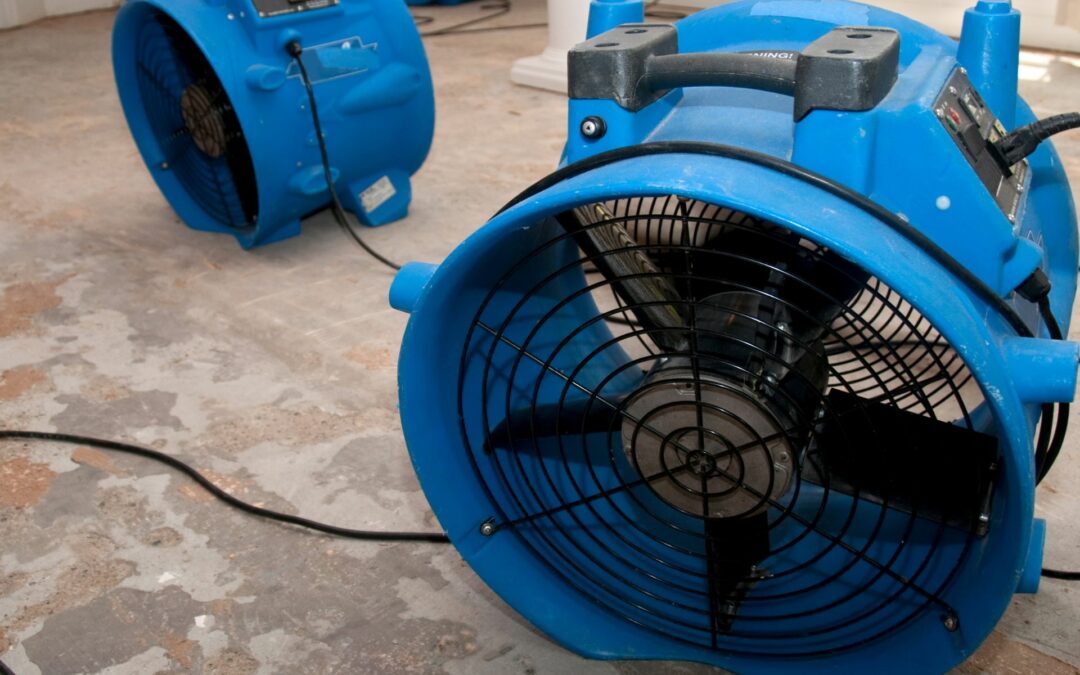If there is a leak in your home or you’re dealing with a flooded basement, you might shrug and assume that you just need to remove the water and that it will dry up on its own. However, that couldn’t be further from the truth. Water damage can lead to severe problems with your home’s functionality and structural integrity. You could also endanger yourself to the health risks of a potential mold infestation.
That’s why having access to the right water damage restoration equipment is crucial. Some of these tools can be used by DIY-ers, but professionals are also trained to use them effectively. Whether you want to be prepared to handle your own water damage or gain familiarity with the restoration process, reading this blog will allow you to learn more about some of the different types of water damage restoration equipment.
5 Types Of Water Damage Restoration Equipment
The five main types of water damage restoration equipment each serve an important role in the clean-up and restoration process. Keep reading to learn more about what each piece of equipment does:
1. Wet/Dry Vacuums
Wet/dry vacuums are one of the most essential pieces of water damage restoration equipment for the removal stage. They can safely extract liquid that gets stored in an attached tank. These vacuums are available in various sizes, so this factor is important to consider if you plan to purchase your own. Additionally, they don’t clog because they use filters that are manufactured to handle water extraction and can be used in any situation, from leaks to floods. Just keep it clean so you can continue using it as long as possible.
2. Submersible Dewatering Pumps
Another piece of water damage restoration equipment used in the water extraction stage is a submersible dewatering pump. This device is used for removing excessive standing water on solid surfaces after a flood. As a result, this pump is ideally used to remove water from flooded basements.
3. Moisture Detectors
To assess the extent and severity of water damage, a technician will often use moisture detectors. As their name implies, they are used to see how much moisture is present in a water-damaged area. This feature makes it easy to determine the severity of water damage in specific areas, allowing whoever is doing the restoration to properly prioritize different parts of your home.
4. Dehumidifiers
Removing any and all lingering moisture in a water-damaged area requires the use of dehumidifiers. There are three different types of dehumidifiers used for this stage of water damage restoration. Refrigerant dehumidifiers are notably energy efficient as they remove warm, moist air with condenser coils. If the moisture is in a cool environment, a desiccant dehumidifier makes the most sense. Finally, LGR (low-grain refrigerant) dehumidifiers are great for producing the most dry air possible.

5. Air Movers
Finally, to speed up the drying time, air movers will be necessary. You might assume that any standard fan will get the job done, but the truth is air movers are far more powerful than your average household fan. They are what you need if you want a speedy water damage restoration process.
ASAP Restoration Uses The Latest And Greatest Water Damage Restoration Equipment
These are just five major pieces of water damage restoration equipment that you can expect a professional to use. Whether your home has endured a flood or a simple leak, these tools will make a huge difference in restoring your property to its original state. As for which service in Houston you can rely on, ASAP Restoration is here to help with the latest and greatest equipment, so contact us today.

